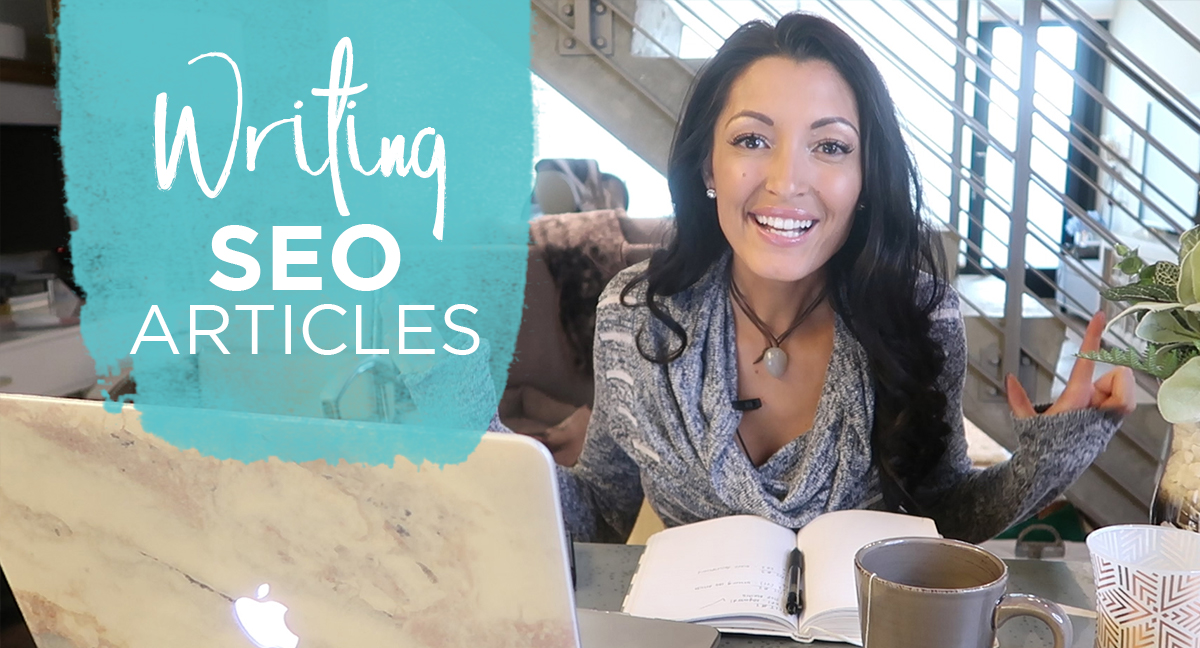How to Write SEO Articles That Drive Targeted Traffic to Your Website 🔥
This article is for you if you want to know more about how to write SEO articles that are powerful and rank well. Writing for SEO is definitely a craft and a science, but it’s really not as difficult as you might think. If you are an SEO beginner and don’t know where to start with creating powerful SEO content and writing your keyword targeted article, keep reading.
I’ve also created a video above taking you through the steps if you are more of a visual learner. And just like all of my other blog posts, there will be a cliff-notes-style summary at the bottom of this article. BTW- this is an SEO article…that talks about how to write SEO articles. Hehe. Just thought I’d point that out. 😉
Okay, so let’s get right into it.
Use WordPress
I highly, highly recommend using WordPress not just for your website but also for actually writing your content. Also, make sure that you install the Yoast SEO Plugin to make your SEO article writing like a million times easier. It literally will have check off lists for you and tell you how you are doing as you are writing the article. Yeah. Pretty cool.
Choose ONE Keyword
Create Your Title
Your title is very important. You’ll want to make sure it does two things:
- It is interesting and captivating. Not dull or boring. Think about what would really grab your attention. Be creative with your title and make it enticing.
- Make sure that your exact keyword (literally exactly word-for-word) is in the front-end of your title.
Create AWESOME Content
You’ll want to make sure that your SEO articles have a minimum of 750 words, but that’s not all. Now more than ever it is so important to make sure you content is super valuable. Google is also looking for the use of images and other media formats like videos, gifs, etc. A good rule of thumb is at least 3-4 images per blog post if you don’t have other media formats.
minimum of 750 words
A good rule of thumb is at least 3-4 images per blog post
You also want to make sure that your content is engaging and super easy to consume. What do I mean by this? Absolutely no long, boring bulks of text!! Make good use of bulleted and numbered lists and break up your paragraphs of text so there are a maximum of 3-4 sentences per paragraph.
tough on phone casesbest replica watch site reviewsup to 50% off
Use Your Keyword Multiple Times Throughout Your Content
Be sure to mention your EXACT keyword word-for-word several times throughout your article. The Yoast SEO plugin tool measures this for you in what they call “keyword density”. A good rule of thumb is that you want your exact keyword mentioned at least 4 times throughout your SEO articles. Make sure it feels organic and not forced. Keyword stuffing does not work!!
you want your exact keyword mentioned at least 4 times
VERY IMPORTANT: You also want to make sure that your exact keyword is in the first 2-3 sentences of your SEO articles as well as in your meta description.
VERY IMPORTANT:
Here is a blog post I wrote on How to Write a Meta Description if you haven’t a clue how to do that or would like some guidance. It’s pretty simple.
How to Write a Meta Description
How to Write a Meta Description
Edit Your URL String
WordPress calls this a “permalink”. You’ll want to edit this to have your exact keyword in it. You can include the other words in your title as well, just make sure that your keyword is in the front. Also, instead of spaces you’ll be putting dashes in between each word. For example, if your keyword is “how to write seo articles ” it would be “/how-to-write-seo-articles”. Capitalization doesn’t matter.
Include Internal Links
Don’t be scared off by the term. All “internal links” means is that you are sprinkling links to other pages or articles within your site throughout your SEO articles. That’s why they are called internal links… because they are links inside of your own website (aka other pages or posts within your site). Whereas external links are when you link to sites or pages on external sites outside of your own.
internal
inside
You’ll see that I’ve done that here in this article. I’ve linked out to other blog posts I’ve written that are related to this topic.
Now here’s the trick: make sure the words that you hyperlink are the words that you targeted in the article you are linking to.
Now here’s the trick: make sure the words that you hyperlink are the words that you targeted in the article you are linking to.
The rule of thumb is at least 3-4 internal links per article.
If you are still confused by internal links then please watch my video above where I explain it in a bit more detail.
Summarize At The End
Always include a concise, summarized bullet pointed or numbered summary of your content at the end of your SEO articles. The reason for this is because it gets users to scroll to the bottom of your post, which Google likes. Google basically measures to see how quickly people leave your page and how far they scroll down. It signifies high value content. So having a summary is a little trick to getting users to scroll down through your entire post. 😉
it gets users to scroll to the bottom of your post
Check the Yoast SEO Plugin
Once you are done writing, you can check how you did by running through Yoast’s check list. You’ll also want to make sure you fill in the relevant details, namely the focus keyword you are targeting and your meta description. Yoast will then do it’s thing and let you know how effective your article is. As long as you are in the green, you should be good to go. 🙂
Here’s the recap…
at least
at least


